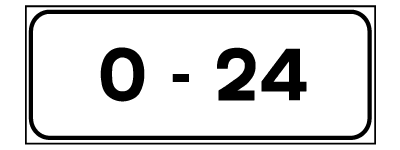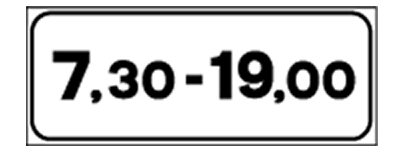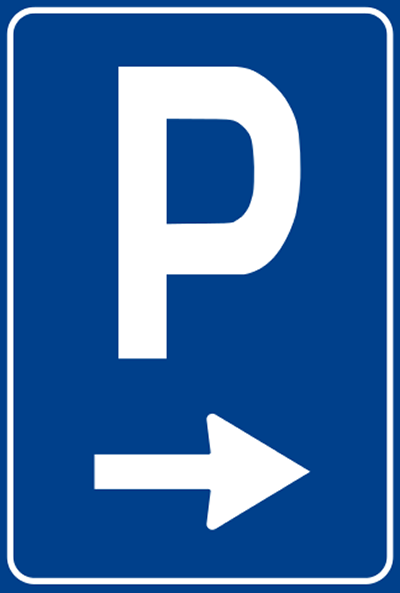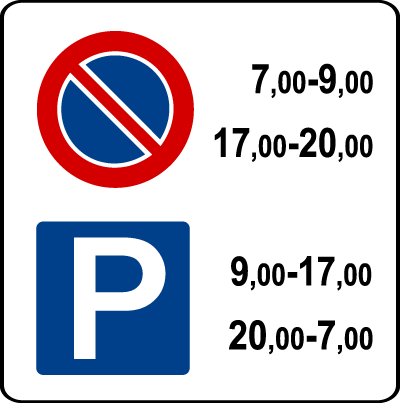This is a big topic…with lots to cover. So, I’m breaking it into two articles.
“All fines are passed from the rental companies to the renter, sometimes after a year”
Part 1 will treat the issue of whether to rent a car, or not…with emphasis on what you can expect if you choose to drive. I asked a couple of friends who have lived in Italy for many years, and who have experienced much in their driving throughout Italy, to give us the benefit of their knowledge. You will find that knowledge, below.
Part 2 will assume that you’ve decided to rent a car, and will cover the rules of the road in Italy, as they are a bit different. This includes the best rental opportunities, licensing requirements, GPS vs Google Maps, Ferries, traffic signs, etc.
In both Parts, I have included photos with captions, which will give you an idea of what we have experienced as we have driven through Italy.
So, let’s start with…
Do You Need to Rent a Car?
We’ve explored Italy completely by train. It’s fun, economical and generally convenient. Can you get everywhere? No, but you can get fairly close to everywhere…but don’t then expect to get an Uber to your agriturismo lodging or small Tuscan village rental.
“If you will be finding yourself in the bigger cities getting culturated, and you have little time or interest in visiting the countryside, I would say that you should absolutely not rent a car…”
For example, let’s say you are in Firenze (Florence) and want to get to Castello Banfi in southern Tuscany, which we highly recommend (see Stay Here, Eat Here, Drink Here: Banfi). You would take a train from Firenze, arriving Siena, and then continue your trip to the small town…extremely small town…a community mostly…well, mostly just a train station - of Monte Antico. Though you can see Castello Banfi sitting on a hilltop just 2 miles away, you would be faced with a circuitous 3-1/2 hour walk unless you crossed over the Fiume Ombrone (river) via a train bridge, which one should absolutely not try. And, seeing as how Fiume Ombrone translates to ‘River of Shadows’, it sounds a bit ominous just thinking about it! So, going to Castello Banfi? Rent a car.
But, there is often bus service to get you to a destination away from a train station, like the bus from the train-accessible-from-Florence Poggibonsi train station to not-to-be-missed San Gimignano…we’ve done it and it was no problem.
This is me driving the main street into beautiful Bellagio….super narrow, and yes, it is the main street
And then again, we’ve explored Italy almost completely by rental car. I say ‘almost’ because we generally rent a car just for certain portions of our journey. When we’ve gone the rental route, we’ve had no problems…at least no significant problems. And using our family mantra of ‘tragedy plus time equals comedy’ we can now laugh about the times when things weren’t going peachy keen.
Only in a rental can you get onto beaten paths like this one
If you will be finding yourself in the bigger cities getting culturated, and you have little time or interest in visiting the countryside, I would say that you should absolutely not rent a car…it is much more trouble than not.
However, if you want to visit the remote, charming, historic, off-the-beaten-path, rural, wine-producing, quaint, pastoral, quiet, dreamy, absolutely lovely parts of Italy, then a rental car is just the thing.
HIRING A CAR WITH DRIVER FOR THE DAY: However, let me say here that if you just want to leave the city for one day of adventure (e.g. leaving Firenze [Florence] to explore the charms of Tuscany for only the day), then hiring a car with driver works well. Just do an internet search for ‘car tours’ like this one for Tuscany.
OK, You’ve Made Your Decision to Drive
What can you expect if you decide to drive in Italy? Let’s let a couple of friends give us some pointers. Pam and Elizabeth have lived and driven in Italy for many years. Pam since 1978, and Elizabeth has lived there for over 37 years. They love Italy, its lifestyle, the wine (especially!), and people. With some basic information and the benefit of their own experiences, they feel that you can do well if you give it a go.
So, below are Italy-driving tips from two seasoned drivers, as well as my own limited experiences. Their tips are shown in “quoted bold Italics”.
[By the way, this sloping type called ‘Italics’ is called such because it was introduced in Italy in 1501 by Aldus Manutius, a Venetian printer, when he printed his edition of Virgil]
Staying One Step Ahead of the Law
So, you thought you got out of Italy without being fined for your driving habits? “All fines are passed from the rental companies to the renter, sometimes after a year.” Yes, your rental car company is obligated to pass on your personal information to the policing authorities. We had just such a parking ticket experience which will be related a bit further below.
How Fast Can/Should You Drive?
KPH VS MPH: First, remember that speed limits are posted in kilometers per hour (kph), rather than miles per hour (mph). A sign indicating a speed limit of ‘80’ means 80kph, or about 50mph, and not 80mph. A quick mental multiplication of 80kph x 0.6 gives you a good approximation of the speed in mph.
The sign to the right is an Italian speed limit sign. This one is for…you tell me…how many mph can you drive…legally?
Speed Traps
“Fixed speed cameras have to be announced with road signs indicating “controllo elettronico della velocità” (‘electronic speed control’). There’s not much excuse for getting caught is there, as they give you fair warning. But, are you looking for speed-trap warnings, or are you looking at that beautiful row of cypress winding its way up the drive to that hillside palazzo?
This sign says, “Traffic police, electronic speed control”. Just like for heart disease, look for the warning signs!
But, how about those Italian drivers, themselves? “They are very frightened of getting points on their license for speeding, but they know where every electronic speed trap is and the quickly apply their brakes when approaching one.”
And, don’t think you know where every speeding camera is located, as there are mobile speed cameras. However, “Mobile speed cameras used by the police have to be announced also with road signs”. So, one must remain vigilant! The best way to not get caught speeding is to not speed…right?
But wait, there’s more! The other speed trap is the Sistema tutor, or Tutor System. This complicated system records your license plate number, and then “two speed machines clock the time it takes between the machines to calculate average speed” from two places along the autostrada (more on the Italian autostrada in the upcoming Driving in Italy - Part 2).
Parking
Arrgh! Parking can be such a pain! But, here’s a helpful tip for finding a place to park your rental: “Yellow parking spaces are for residents, blue spaces are subject to payment and white spaces are free.”
A typical big-city street with very little parking
VERY LIMITED PARKING: Parking is a great reason to not rent a car in a metropolitan area…whether a major one or a very small one. Many roads in Italy were laid out centuries ago and parking was not something of concern at that time.
Some smaller towns do not allow un-permitted vehicles in their centro storico (historic town center) because of vary narrow streets (see ‘No-Go Zones’ below).
In some of the very small hill towns, there just physically isn’t room to park, and you park at an edge-of-town parking lot and walk into town. Many Italian towns are still walled cities, which are surrounded by large, protective walls with narrow portals here-and-there through which you must pass through by foot or you must have a vehicle permit.
HOW TO PAY IN A PARKING GARAGE: In Siena, for instance, there are large multi-level parking garages outside the walls of the city where you park your car. We learned after thirty minutes of backing up, going the wrong way on ramps, and getting out of the car to illegally lift drop-down gates to drive under them, that you use your machine-dispensed ticket received as you enter the parking structure to pay at a kiosk before you get in your car to leave. Ahhh, so that’s how you do it!
Google Map showing Parking locations in centro Verona
MAP HELP: Using Google Maps, you can zoom in on a city and type ‘parking’ into the search bar and see parking opportunities displayed, like this one for Verona. Though we did have to bypass two full lots before we were able to find one with availability, the map helped, especially with the display of one-way streets. And, using the ‘Directions’ function of the map, we were taken right to the lots going the correct way down the myriad of one-way streets.
DIGITAL PARKING: In Asti, we were directed to download the ‘Asti Parcheggi’ app to park on the street, in lieu of their use of parking meters. These are the blue painted spots mentioned above.
Small town polizia scoring a parking violation
DAUNTING PARKING: In Rome, parking our car at the Hotel Campo de Fiore was something I refused to do. They have arrangements to park cars in a garage a block away and the tunnel-like entrance was so narrow that I insisted that the garage attendant do the parking. He had no problem, and I had no problem with the glass of wine while he was doing it. And folding in the side mirrors was a necessity.
LOOK FOR THE SIGNS: Look for ‘no parking’ signs, which are a red circle on a blue field with a red slash, like this one. Wouldn’t it be more intuitive if there were a white ‘P’ included on that field of blue, under the slash? We saw these signs all over in Italian towns thinking that it was saying ‘do not enter’…but then again, we’ve been wrong about a lot of things before.
Here are some more parking related signs. (from left to right) Applicable 24hrs-a-Day; Applicable for Specific Hours; Parking Ahead to the Right; Detailed Hours of No Parking and Parking
A PARKING ANECDOTE: Arriving at the Hotel Convento in Amalfi, having driven the torturous Amalfi road, there was no place to park in front of said hotel. The Hotel Convento is up the side of the mountain a few hundred feet and there is no pullout in front of the hotel’s small street level elevator lobby. The bellman who came out said, “Just leave it there, I’ll park it for you later”. So, there it sat in the westbound lane of the two lane road along the Amalfi coast. The Italian drivers just drove around our car as if it wasn’t even there blocking the road…that’s just the way it’s done along the Amalfi coast.
That’s the just-mentioned road that you see in this photo below as Ellen takes life-in-hand to get to dinner.
Going to dinner in Amalfi…this is the main (and only) Amalfi Coast road…it is two lanes only
“Most streets have cleaning days which are posted, usually only in Italian.” Here is just such a posting. Can you figure out what it says?
Since ‘lunedì’ is Monday, and ‘venerdì’ is Friday, you best not park here on weekdays between the hours of 9:00pm and 4:00am. Otherwise, look for other signs and curb painting to see if you can park thereabouts.
PARKING TRAPS: Our friend Scott waited at the car in a pull through area for us to get our stored luggage from the Santa Maria Novella train station in Firenza (Florence). Two polizia chatted him up, let him know that he shouldn’t park there, and seemed to understand as he explained that he was waiting on his travelling companions to bring out their luggage. All seemed well, with nothing in hand, until he got a parking ticket for $220 in the mail several months later.
No-Go Zones
“All historical towns have a ZTL, zona di traffico limitato, restricted traffic areas, which are controlled by cameras.”
Do not drive in an area with a ZTL (limited traffic) sign or one marked Area Pedonale (pedestrian zones), unless you have special permission. Most cities and small towns near the centro storico (historic center) have these zones.
We had to get a permit from our hotel in San Gimignano to enter the ZTL…and we only fit through the portal by folding in the mirrors…a very tight fit! It’s kind of like getting the ship in the bottle. This is typical of the ancient walled cities with their small, defense-minded portals.
“Access is allowed to hotels in the ZTL. The hotels have to enter the plate number into the system, otherwise there is a fine.” If your hotel is located in one of these zones (as I hope yours is, as it is more fun to stay in these historic areas than on the road leading out of town), your hotel can usually provide you with the necessary permissions– either to park, or just drop off your luggage before parking outside the ZTL. For example, in both San Gimignano and Riva del Garda, we were given a permit to drive into the ZTL to drop off luggage, but we then had to go outside the ZTL to park…repeating the process on the morning of departure.
Below you can see signage designating ZTL and pedestrian zones.
On the left is the sign to look for near the town centers. If you see this sign, don’t drive there.
In the middle we see the same sign, but with additional information. When could you drive into this zone? How about 8:00pm to 8:00am. And if you can’t read the other fine print in this sign, you’d best just not assume that it gives you special permissions to enter the ZTL.
On the right is a sign designating a pedestrian zone…like our pedestrian malls. Supplemental information suggests that there are three exceptions.
A ZTL Anecdote
For brother-in-law Craig’s birthday, we went to dinner on the shores of Lago Orta, in the town of Orta, at Locanda di Orta — we just figured that we orta do that! We drove on a road through the town that was so narrow that once again, we had to fold in the side mirrors and creep down the ‘street’.
The sign emphatically indicates (both signs actually) that going forward is a ZTL for 24 hours a day
Upon entering Piazza Mario Motta (not to be confused with Iron Chef Morimotto, by the way), we were surrounded by Saturday evening strollers with frowns on their beautiful Italian faces. One gentleman kindly informed us that “You are not supposed to drive here”. We had to backtrack down that same very skinny road to park in a lot at the edge of Orta.
What we failed to see, and what we would not have known at the time even if we had seen it, was the sign in this photo, which I have just now captured from Google street view. Plain as day, there’s a ZTL sign — two actually — prominently displayed. And, see the camera on the pole in the upper left…this was in the fall of 2018, so we may still get a ticket in the mail!
Google now tells us to avoid driving into lakeside Orta
We had used Google maps to plan our route to the restaurant, located just off of previously mentioned Piazza Mario Motta and we faithfully followed it to our Saturday-evening doom.
Now, I can see that said Google map actually indicates that you should not be driving along the route designated, where it plainly says (in Italian), “Start of Limited Traffic Zone”. Live and learn…and now, you’ve learned!
This ZTL in Riva del Garda was accessible with our rental for check in and check out…the car was then lodged in a parking garage
Summary
Now you have some idea of what it would be like to drive in Italy, thanks to two, seasoned, long-time Italy residents.
I hope we haven’t scared you off of the idea, because that is the only way you will see some magnificent countryside. Just learn a few important signs and stay within the speed limit…in kph…and you will do admirably.
In the next installment of Driving a Car in Italy, I will assume that you’ve decided to give driving a try, and I’ll give you some tips on car rental, maps, ferries, permits and other things to make your journey more enjoyable.
A special thanks to Pam and Elizabeth for their insight. Pam Mariani and her husband John’s family moved to Italy in the 1970s to start a wine producing business just south of Montalcino, Tuscany…the home of Brunello wines. Their pioneering adventure paid off and Banfi is now one of the largest wine producing companies in the world. Elizabeth Koenig has faithfully served as Banfi’s Hospitality Project Director since 1982…hospitality that we have experienced and enjoyed first hand.
As you drive those charming Tuscan roads, if you hear a honking horn behind you as you negotiate a narrow curve in the road, that will be me letting you know that I want to pass…just like an Italian!!!
Ciao for now,
Steve
Please provide comments below









